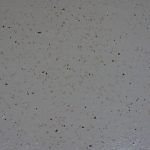 Epoxy is one of the most beneficial floor finishes for industrial and commercial applications. Based on the fact that it is highly attractive and highly durable, epoxy floor finishes are in high demand. While it is considered an affordable long-term option, epoxy can present floor problems, particularly when incorrectly applied. This article will provide information on the common signs of epoxy floor problems.
Epoxy is one of the most beneficial floor finishes for industrial and commercial applications. Based on the fact that it is highly attractive and highly durable, epoxy floor finishes are in high demand. While it is considered an affordable long-term option, epoxy can present floor problems, particularly when incorrectly applied. This article will provide information on the common signs of epoxy floor problems.
What Is Epoxy Floor Coating?
Epoxy is a two-part, thermosetting floor covering created using polyamine hardener and epoxide resin. The resin provides the depth and color, while the hardener acts as a catalyst to give epoxy its strength. When mixed carefully at the correct ratio, a chemical reaction occurs, and epoxy floor coating is formed.
What Are The Common Epoxy Floor Problems?
1. Bubble Formation
One of the most common types of epoxy floor problems is bubble formations. Typically, bubbles appear in clusters known as honeycombs and are the size of pinheads. The bubble formations are caused by the incorrect ratio of resin to hardener during mixing, which leads to air entrapment in the epoxy. Temperature differences in the resin and hardener can also form bubbles as the air becomes trapped when the temperature attempts to equalize.
2. Craters And Blisters
The second most common epoxy floor problems are craters and blisters. Blisters refer to large bubbles containing entrapped air; however, craters are the opposite. Craters refer to damage caused when bubbles pop leaving an indentation on the epoxy surface. If air is trapped in the surface concrete when it is covered with epoxy, the air engages in a chemical reaction causing heat. This releases moisture within the air pocket causing it to expand. The air is forced to the surface where it either develops into a blister or a crater.
3. Film And Flow Appearance
The film and flow appearance are prominent when an epoxy coating is too hot or too cold. Instead of being attractive, the epoxy will appear uneven and dull. This change in appearance can also occur when excessive airflow is blown over the surface during the curing process. Epoxy is not like paint where it dries; instead, it cures when applied to the surface.
4. Peeling And Poor Adhesion
Potentially the most fatal flaw for epoxy is the poor application, which can result in peeling and poor adhesion. This can result from improper mixing of the hardener and resin, wide temperature variations, moisture trapped in the surface, contamination within the epoxy mixture, or poor preparation of the surface.
As can be seen, there are several signs of epoxy floor problems that can be taken into account. By being aware of these, you can be certain to apply the epoxy correctly.
